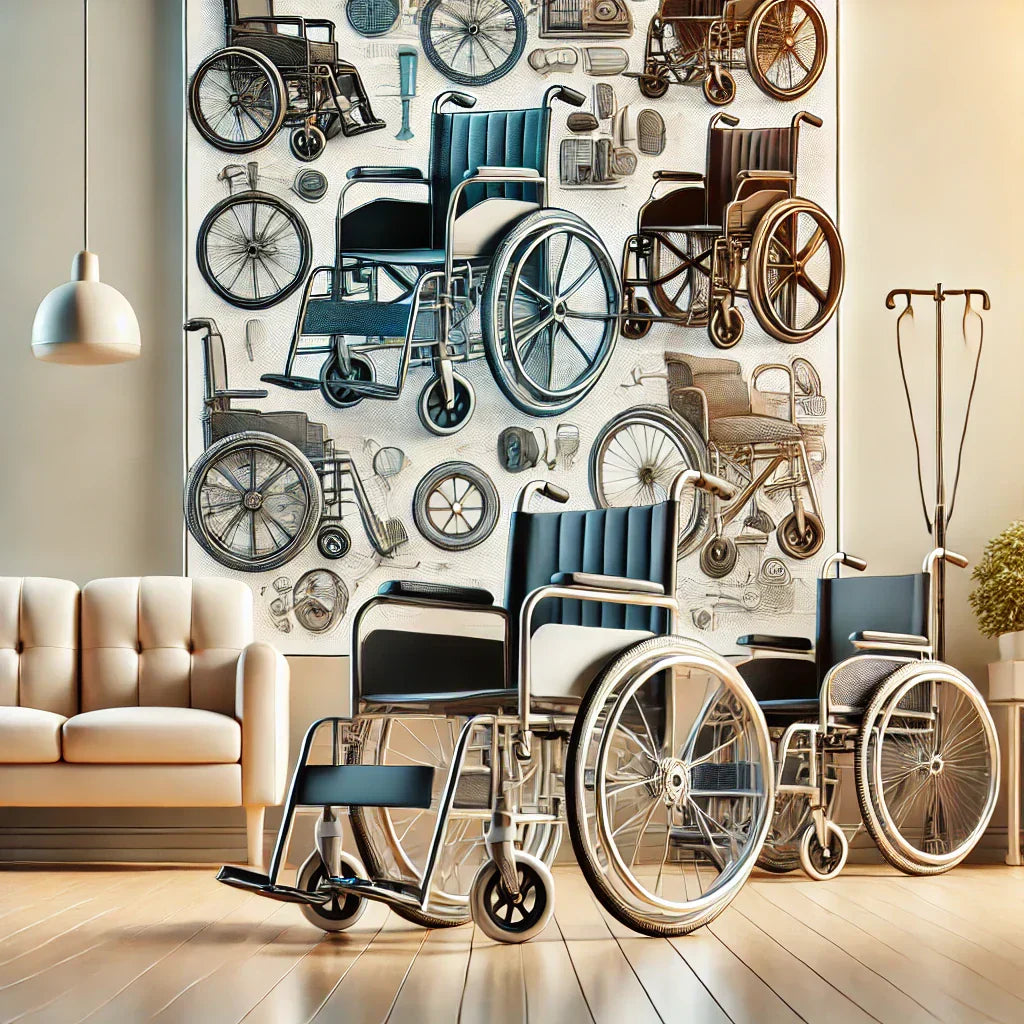
How to choose the right wheelchair – Important points to consider
Share
1. Define clear usage requirements
First, you need to consider how you plan to primarily use the wheelchair. Will you use it for long periods of sitting or just for short trips? Will it be used on flat ground or will it need to overcome obstacles such as stairs or uneven ground?
· Long-term use: If you use the wheelchair for long periods of time, comfort is especially important. Choose a model with a padded seat and back support to avoid discomfort from sitting for long periods.
· Short trips: If the wheelchair is used primarily for occasional trips or short periods of time, a lightweight, foldable wheelchair may be more practical.
2. Choice of wheelchair type
Wheelchairs come in different types that can be selected depending on the user's needs, the area of activity and the desired level of comfort:
·
Manual wheelchairs: These must be pushed by the user and are suitable for people with sufficient upper body strength. Manual wheelchairs are generally lighter than electric models and are well suited to flat terrain, and maintenance costs are lower.
·
O Standard Manual Wheelchair: Ideal for everyday use and simple in design.
O Lightweight manual wheelchair: Easy to fold and transport, ideal for trips.
O Sports wheelchair: Specially designed for sporting activities and suitable for people who need more freedom of movement and flexibility.
·
Electric wheelchairs: These are suitable for people with limited upper body strength and are powered by a battery, which means they require less effort. Electric wheelchairs are better suited for longer periods of use and more challenging terrain (e.g. ramps or uneven surfaces).

3. Choose the right wheelchair size
Choosing the right wheelchair size is important to ensure comfort and prevent health problems. Pay attention to the following points:
· Seat width: A seat that is too wide can be unstable, a seat that is too narrow affects comfort and can cause health problems. Measure the width of your buttocks and choose the appropriate seat width.
· Seat depth: The seat depth should be appropriate – a seat that is too deep can affect posture, a seat that is too shallow may not provide enough support for the thighs.
· Seat height: The seat height is also important – a seat that is too high will leave your legs hanging in the air, a seat that is too low will cause your knees to be bent too much.
4. Weight and mobility of the wheelchair
For people who need to move their wheelchair frequently, weight is crucial. A lightweight wheelchair is easier to transport, store and use. Wheelchairs made of aluminum are usually particularly light and are ideal for travel or excursions.
If you need to put the wheelchair in the car frequently, a foldable and lightweight wheelchair is a better choice. Some lightweight models even have removable parts that make storage even more flexible.
5. Choice of wheels depending on the terrain
The wheels of the wheelchair play an important role because their size and material directly affect the user experience:
· Large wheels: Ideal for flat or relatively smooth terrain, easier to move and suitable for everyday use.
· Small wheels: Suitable for tight spaces, such as indoors. However, note that smaller wheels are harder to ride on uneven ground.
· Pneumatic tires: Pneumatic tires offer more comfort, especially outdoors, as they absorb shocks and vibrations from uneven ground.
· Solid rubber tires: These cannot burst, but offer less comfort on uneven ground.
Choose the right wheels depending on the terrain on which you will primarily use the wheelchair.
6. Security and additional features
Safety is an important aspect when choosing a wheelchair. A good wheelchair should offer the following features:
· Braking system: Secures the wheelchair so that it does not roll away when parked. Rear wheel brakes are usually standard.
· Armrests and footrests: The armrests should be ergonomically designed to maximize comfort and avoid discomfort during prolonged use. The footrests should be adjustable to provide optimal support for the lower legs.
· Seat belt: For users with limited mobility, a seat belt can prevent them from slipping out of the wheelchair.
Conclusion
Choosing the right wheelchair goes beyond the simple need for mobility - it is a key factor in improving the comfort and quality of life of the user. When purchasing, you should consider your individual needs, the environment in which you will be using it and your budget to make the best choice. Trying things out, getting professional advice and comparing brands and models are important steps in finding the ideal wheelchair. We hope this blog post helps you make an informed decision and improve your quality of life!
